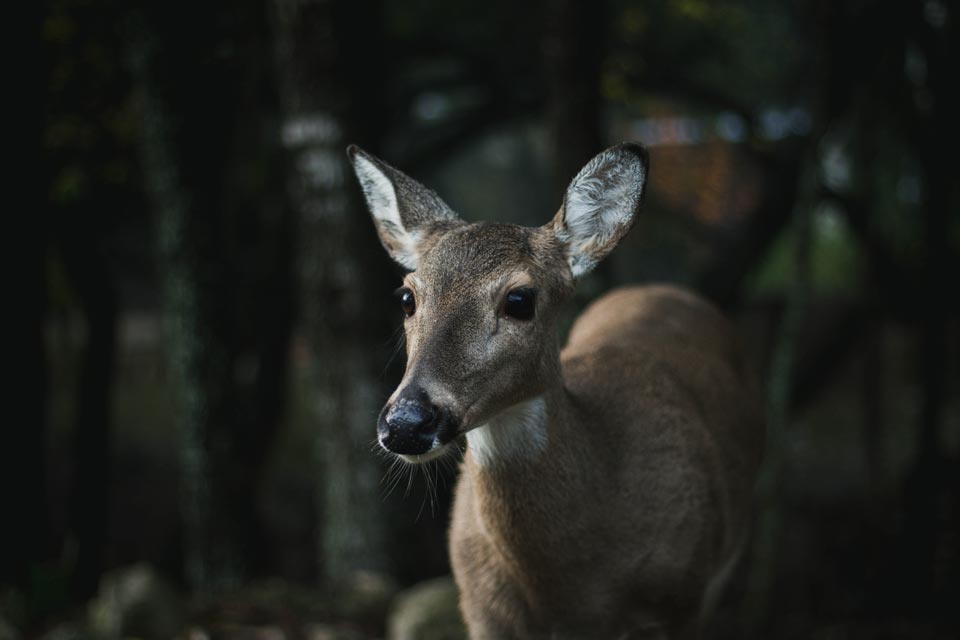From the Northern Veg Crew:
The northern crew ran into a few down fences which were all damaged by fallen branches and dead trees.
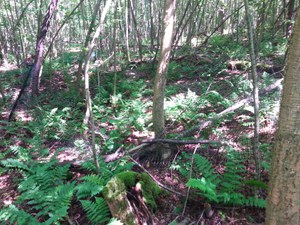
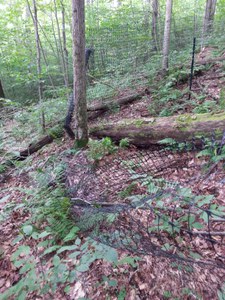
Fixing a fence doesn’t always include a full rebuild but it does add some time into the field day. If anything, it’s easier to get into the fence when it’s damaged opposed to crawling underneath it. Some trees can be moved while others are obviously far too large. Our fencing needs to be cut around the tree and tied back together using zip ties. Many fences exist within the northern Susquehannock which have fallen trees and large branches inside the fenced area from past disturbance.
The northern crew also spent the week surveying super variable areas. We had large valleys covered in fern, valleys covered in blackberry/raspberry, and areas with little vegetation at all located inside hemlock stands.
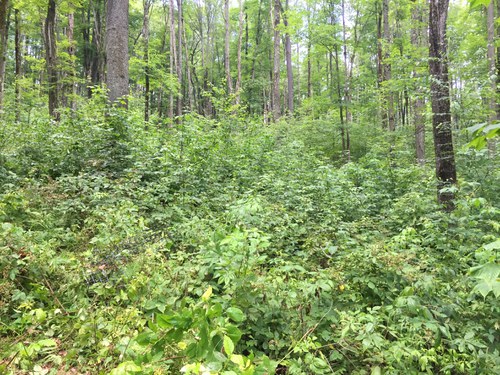
Completing plots inside rubus patches aren’t so bad because diversity tends to decrease but it does test ones patience poking around the thorny vegetation looking for smaller individuals like seedlings. Fern beds have to be the worst areas to survey. It is really hard to locate plot stakes in the ground and it’s really hard to see anything underneath the fern. It’s also hard to work around the plot and identify vegetation without “trampling” and destroying an area. We try to survey areas while leaving as small of an impact as possible.
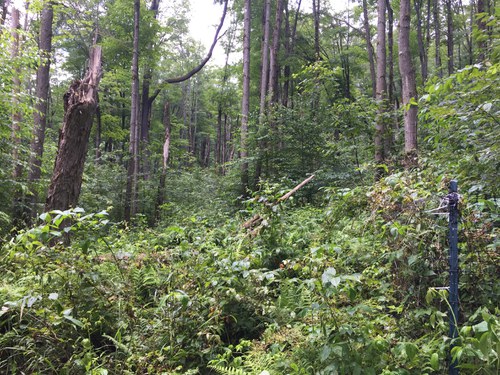
We also encountered one of our “busiest” fences of the year. This fence was just loaded with blackberry and had so much inside it that the fence started to droop over the weight.
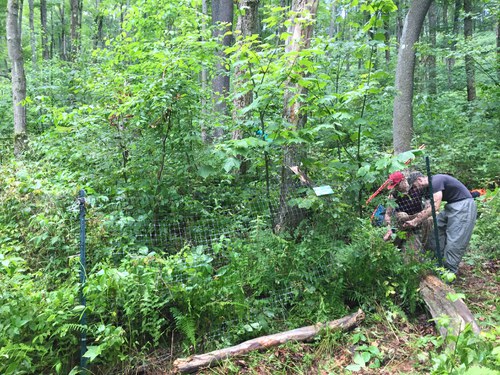
This fence also had to be fixed because a large sugar maple branch fell inside the fence. Other fences are quite tame and doing the vegetation inside of them is quite painless.
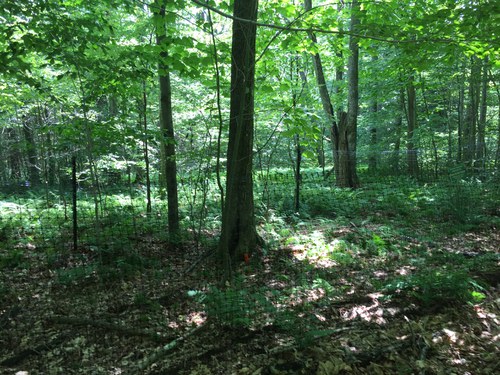
-Ben
Northern Veg Crew
From the Southern Veg Crew:
These past few weeks have been the usual: lots of walking, lots of mountain laurel, and lots of bugs. Some particularly difficult hikes included one in Bald Eagle that took over 2 miles of hiking to access, and another in Bald Eagle that was atop a ridge surrounded by larger rocks than we’re used to.

On the top of a different ridge, we were in an area with large sassafras trees (from 5-10” dbh). Growing off like a branch from one of them was a black birch tree…this is something even we don’t see every day!

We also had 2 great rattlesnake encounters. One was a juvenile black phase…inside of one of our fenced microplots. Delaney nearly came face-to-face with it as she ducked under the fence to start collecting data.

I got a small stick and eventually moved the little one out of our way. The other snake was near the top of a ridge. Erik spotted it (as usual). It was a beautiful black phase and looked freshly shed.

In addition to the usual stories and encounters, we had decided to take some pictures of interesting insects we have been seeing. The coolest insect we’ve seen yet in the field, in my opinion, was an eyed click beetle (Alaus oculatus)…an unexpected find while finishing up a plot on a nice ridge top! They are larger than I expected, completely harmless…and beautiful!

One insect that I certainly did not expect to see as often as we do is the common walkingstick (Diapheromera femorata)! We have probably seen about 10 or so of these interesting bugs thus far, and will hopefully encounter more.
This walkingstick that has not gone through enough instars (molts) to acquire the brown coloration seen in bigger individuals.

Compare it to this one. A larger individual, but not yet a full-sized adult. They can grow up to almost 4” long!

Another one of my favorite insects is not as prevalent. The Polyphemus moth is a member of the giant silk moth family (Saturniidae). Any member of this family is a great sight to see given that the adults are not alive for more than a few days.

After all, their only goal in life is to reproduce! I found this individual while driving around at night in Rothrock. It was flying around in my headlights, so I slammed on the breaks to jump out and get a picture of it. It is important to be careful as their wings are fragile. I snapped a quick photo and walked it into the forest to release it quickly.
A large katydid:

A praying mantis:

An interesting fly of the genus Anthrax, a member of the Bombyliidae family, which usually mimic bees. This one does not, however. According to Wikipedia, the larvae of these flies parasitize those of bees and wasps. Lots of cool stuff to see flying around while you’re out there!

-Mitchell
Southern Veg Crew
If you would like to receive email alerts of new blog posts, subscribe here.
And Follow us on Twitter @WTDresearch
p.p3 {margin: 0.0px 0.0px 12.0px 0.0px; font: 11.0px ‘Trebuchet MS’; -webkit-text-stroke: #000000}
p.p4 {margin: 0.0px 0.0px 12.0px 0.0px; font: 11.0px ‘Trebuchet MS’; -webkit-text-stroke: #000000; min-height: 12.0px}
